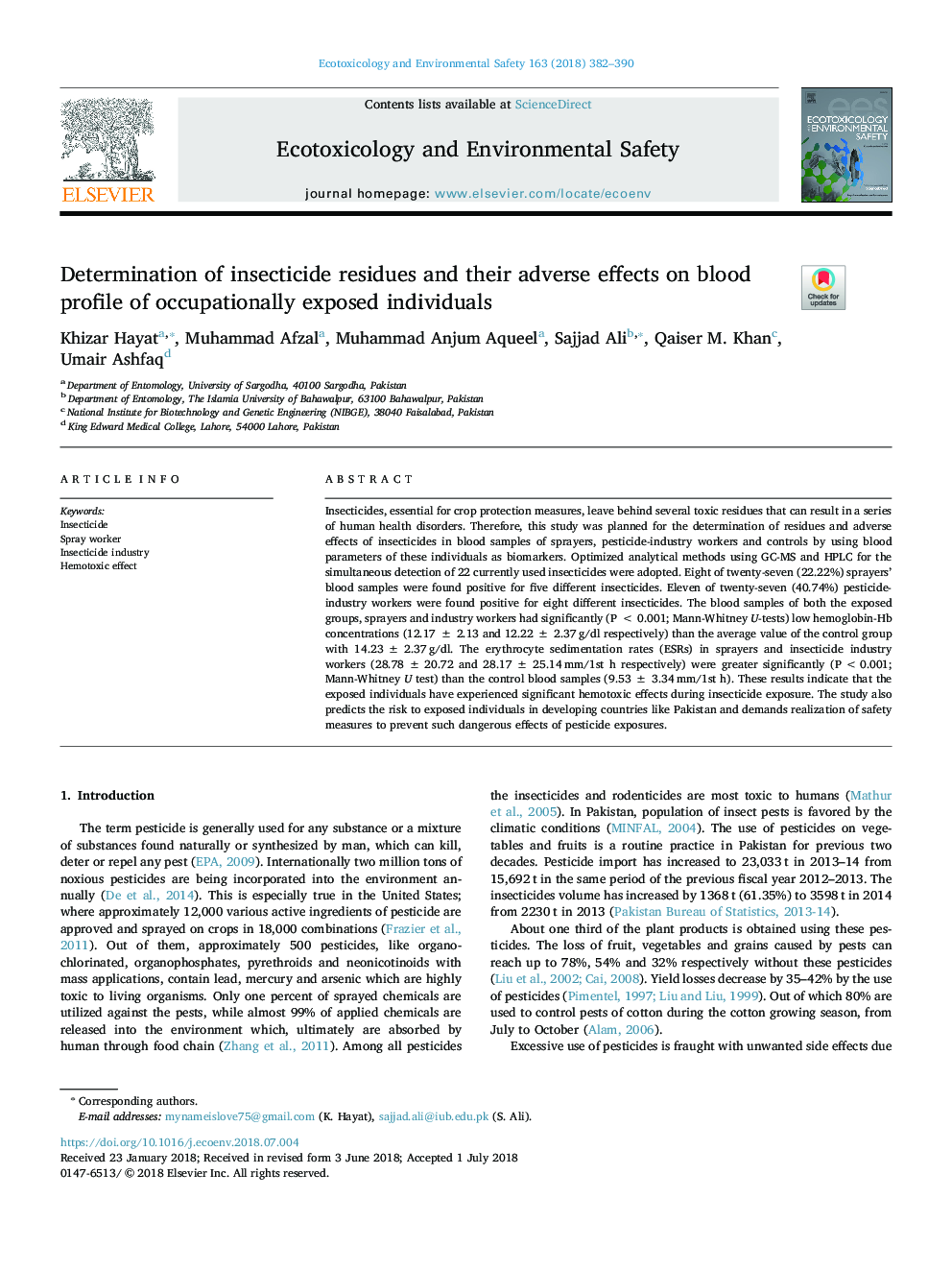| Article ID | Journal | Published Year | Pages | File Type |
|---|---|---|---|---|
| 8853164 | Ecotoxicology and Environmental Safety | 2018 | 9 Pages |
Abstract
Insecticides, essential for crop protection measures, leave behind several toxic residues that can result in a series of human health disorders. Therefore, this study was planned for the determination of residues and adverse effects of insecticides in blood samples of sprayers, pesticide-industry workers and controls by using blood parameters of these individuals as biomarkers. Optimized analytical methods using GC-MS and HPLC for the simultaneous detection of 22 currently used insecticides were adopted. Eight of twenty-seven (22.22%) sprayers' blood samples were found positive for five different insecticides. Eleven of twenty-seven (40.74%) pesticide-industry workers were found positive for eight different insecticides. The blood samples of both the exposed groups, sprayers and industry workers had significantly (Pâ¯<â¯0.001; Mann-Whitney U-tests) low hemoglobin-Hb concentrations (12.17â¯Â±â¯2.13 and 12.22â¯Â±â¯2.37â¯g/dl respectively) than the average value of the control group with 14.23â¯Â±â¯2.37â¯g/dl. The erythrocyte sedimentation rates (ESRs) in sprayers and insecticide industry workers (28.78â¯Â±â¯20.72 and 28.17â¯Â±â¯25.14â¯mm/1st h respectively) were greater significantly (Pâ¯< 0.001; Mann-Whitney U test) than the control blood samples (9.53â¯Â±â¯3.34â¯mm/1st h). These results indicate that the exposed individuals have experienced significant hemotoxic effects during insecticide exposure. The study also predicts the risk to exposed individuals in developing countries like Pakistan and demands realization of safety measures to prevent such dangerous effects of pesticide exposures.
Keywords
Related Topics
Life Sciences
Environmental Science
Environmental Chemistry
Authors
Khizar Hayat, Muhammad Afzal, Muhammad Anjum Aqueel, Sajjad Ali, Qaiser M. Khan, Umair Ashfaq,
